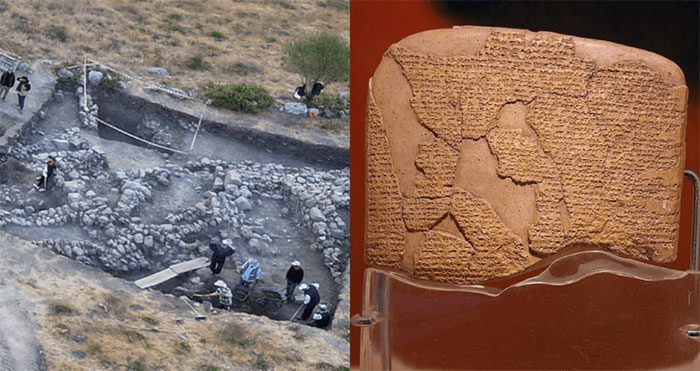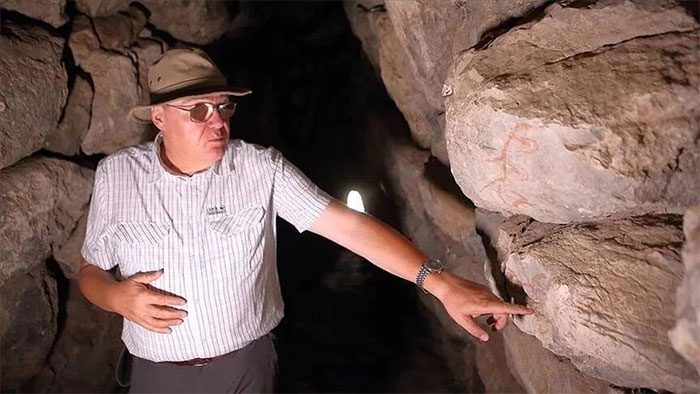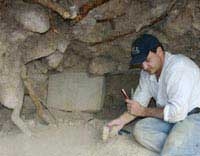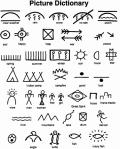According to information from Allthatsinteresting, excavations at the ancient city of Boğazköy-Hattusha in Turkey have recently revealed a tablet containing a previously unknown Indo-European language.
The translation and identification of this language will take considerable time, as it has never been encountered before. However, experts confirm that this language belongs to the Anatolian-Indo-European language family and is likely the language of the region of Kalašma, an ancient city located in present-day northwestern Turkey.
Boğazköy-Hattusha, a UNESCO World Heritage Site, was the capital of the Hittite Empire during the Late Bronze Age, approximately from 1650 to 1200 BCE. Excavations at this site have been ongoing for over a century through the German Archaeological Institute.

Cuneiform is one of the earliest writing systems in human history. It was invented by the ancient Sumerians in the Mesopotamia region. (Photo: Allthatsinteresting).
According to the University of Würzburg, since the beginning of excavations at this site, researchers have discovered nearly 30,000 clay tablets inscribed with cuneiform, providing the archaeological community with a wealth of information about the history, society, economy, and religious traditions of the Hittites and their neighboring cultures.
Most of the texts recorded on the clay tablets at this site are written in Hittite, the oldest known Indo-European language. However, this year’s excavation has uncovered hymns written in this previously unknown language.
“The new language is written in cuneiform,” Andreas Schachner, the head of this year’s excavation, stated in an interview with Newsweek. “This is the writing system used by the Hittites. This text is part of a longer document that begins with Hittite writing.”
Current scientific research indicates that there are over 3 billion speakers of Indo-European languages today, a language family believed to have a common prehistoric ancestor.
The clay tablets found at Boğazköy-Hattusha are all inscribed in cuneiform, the oldest known writing system, developed by the ancient Sumerians in Mesopotamia over 5,000 years ago. Cuneiform was used to write many languages of the ancient world, including Sumerian, Babylonian, Old Persian, and what is now referred to as “Kalasmaic.”

The Hittites were an ethnic group residing in ancient Anatolia (Asia Minor), speaking an Indo-European language and establishing a kingdom centered at Hattusa in Central Northern Anatolia. The capital Hattusa was surrounded by the Halys River (known as Marassantiya by the Hittites). (Photo: Allthatsinteresting).
The Hittite Empire reached its height in the 14th century BCE under King Šuppiluliuma I. The empire encompassed the Anatolian Peninsula, which constitutes a large part of present-day Turkey and a portion of Upper Mesopotamia. It was a powerful empire during the Late Bronze Age until it was conquered by the Assyrian Empire.
The Hittite Empire may have developed one of the earliest known constitutional monarchies, and the Hittites are frequently mentioned in the Bible as living among the ancient Israelites.
Archaeologists have made several fascinating discoveries from the Hittite Empire. Just last month, archaeologists unearthed the remarkably well-preserved remains of two individuals from the Hittite Empire during the Bronze Age—these remains were found in western Turkey at the Tavşanlı Mound, dubbed the “Heart of Western Anatolia.”
Researchers also found remnants of skin and brain on the remains, preserved through a carbonization process that occurred when the bodies were exposed to extreme heat. They believe that these individuals were incinerated during an attack on the city, and the remains date back nearly 1,700 years BCE.

The most prosperous period of the Hittites occurred around the 14th century BCE, with a territory that spanned most of Anatolia, northwest Syria, and the upper regions of Mesopotamia. The remnants of the Hittite Empire in the capital Hattusa are well-preserved. Temples, royal residences, fortifications, decorative items, and intricately carved stone pillars provide researchers with insights into a powerful empire that influenced a vast area extending from Anatolia to northern Syria for about 200 years. (Photo: Allthatsinteresting).
Nearly 250 hieroglyphs were also discovered at the Hattusa site last year in the Yerkapı Tunnel. According to Arkeonews, the tunnel was likely used for worship rituals, and the hieroglyphs are estimated to have been drawn around 3,500 years ago.
Schachner, who studied both the discovery of the hieroglyphs last year and the Kalasmaic language this year, stated: “We have identified a total of 249 Anatolian hieroglyphs here, but they are not entirely different.” “In total, we can categorize them into eight groups. These characters provide us with a social renewal. Since they were written in paint, we need to interpret them in various methods. We think it was done quickly and can therefore be understood quickly.”





















































